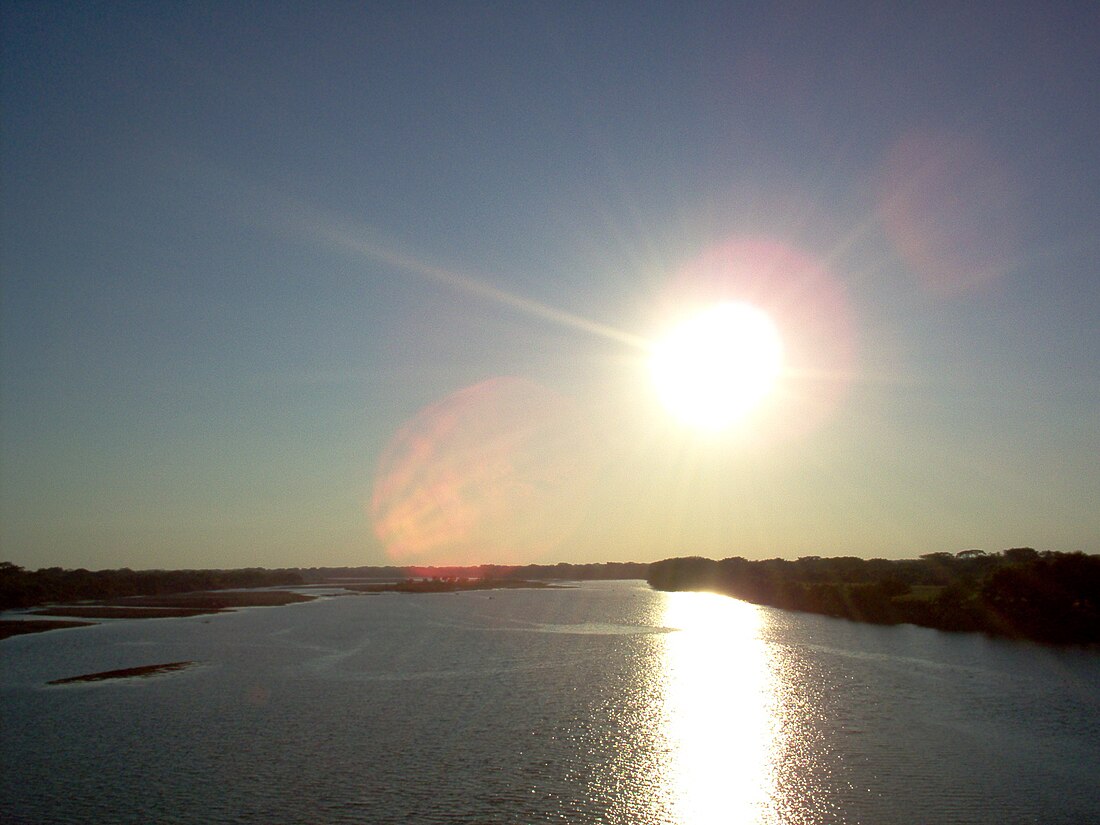Lempa River
River that flows through Guatemala, El Salvador and Honduras From Wikipedia, the free encyclopedia
The Lempa River (Spanish: Río Lempa) is a 422-kilometre-long (262 mi) river in Central America.[2] It is a transboundary river shared by El Salvador, Guatemala and Honduras.[3]
| Lempa River | |
|---|---|
 Sunset over the Lempa river | |
 Railroad Bridge (FENADESAL) over the Lempa river, as seen from the Carretera del Litoral highway bridge (El Salvador) | |
| Location | |
| Countries | |
| Physical characteristics | |
| Source | Sierra Madre |
| • location | Olopa, Chiquimula, Guatemala |
| • coordinates | 14°41′33″N 89°18′18″W |
| • elevation | 1,200 m (3,900 ft) |
| Mouth | Pacific Ocean |
• location | El Playón, Tecoluca, San Vicente, El Salvador |
• coordinates | 13°15′17″N 88°49′38″W |
• elevation | 0 m (0 ft) |
| Length | 422 km (262 mi) |
| Basin size | 18,246 km2 (7,045 sq mi) |
| Discharge | |
| • location | Cuscatlan bridge[1] |
| • average | 362 m3/s (12,800 cu ft/s) |
Geography
Summarize
Perspective
Its sources are located in between the Sierra Madre and the Sierra del Merendón mountain ranges in southern Guatemala, near the town of Olopa.[2] In Guatemala, the river is called Olopa River and flows southwards for 30.4 kilometres (18.9 mi) before entering Honduras and changing its name to Lempa River at 14.547700°N 89.264002°W. In Honduras, it flows through the Ocotepeque Department for 31.4 kilometres (19.5 mi), and crosses the border with El Salvador at the town of Citalá (14.371857°N 89.212439°W) in the Chalatenango Department. The river continues its course for another 360 kilometres (220 mi) in El Salvador, flowing in a generally southwards direction until it reaches the Pacific Ocean in the San Vicente Department.[2][4] The river forms a small part of the international boundary between El Salvador and Honduras.
The river's watershed covers 18,246 km2 (7,045 sq ml) of which 10,255 km2 (3,959 sq ml), that is, 56.56% of the watershed territory, lie in El Salvador; 5,696 km2 (2,199 sq ml) in Honduras; and 2,295 km2 (886 sq ml) in Guatemala.[1] 49% of El Salvador's territory is covered by the Lempa River basin,[1] and 77.5% of the Salvadoran population lives in cities, towns, and villages located within the basin territory, including the capital city of San Salvador.[4]
Hydroelectricity

There are several hydroelectric dams along the river. In El Salvador, there is the Guayojo Dam, the Cerrón Grande Hydroelectric Dam, the 5 de Noviembre Dam, and the 15 de Septiembre Dam. The latter can be easily seen from the Pan-American highway.
See also
References
Wikiwand - on
Seamless Wikipedia browsing. On steroids.

